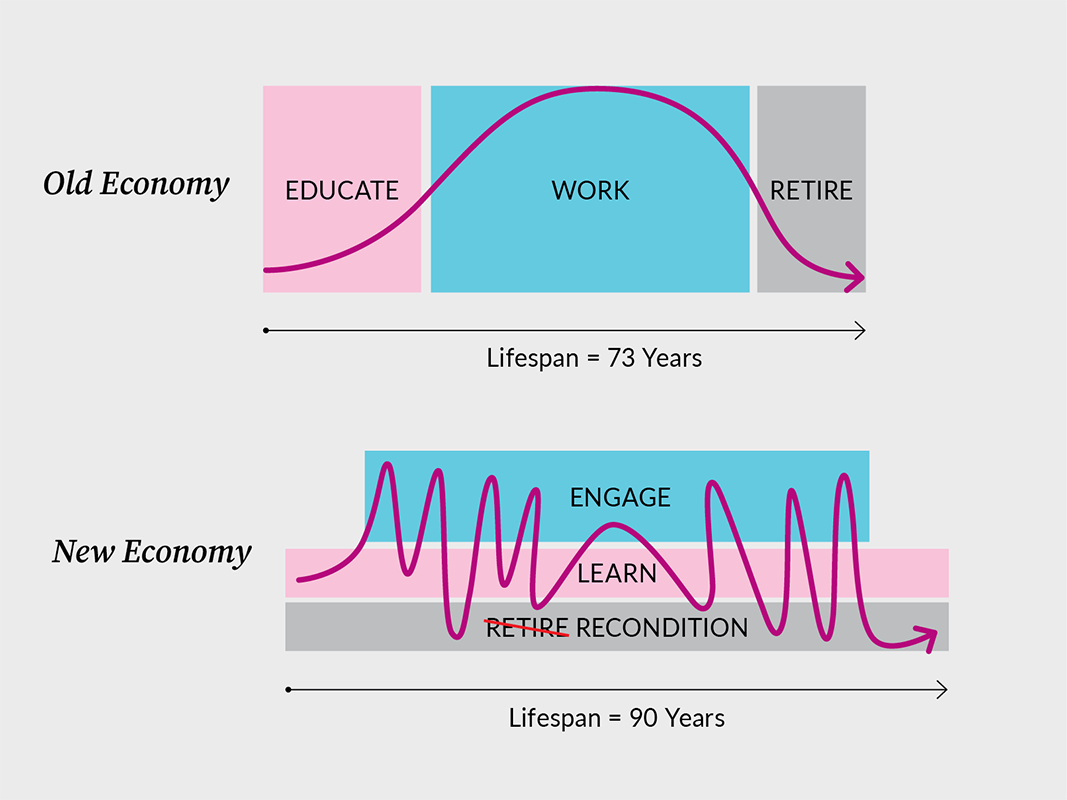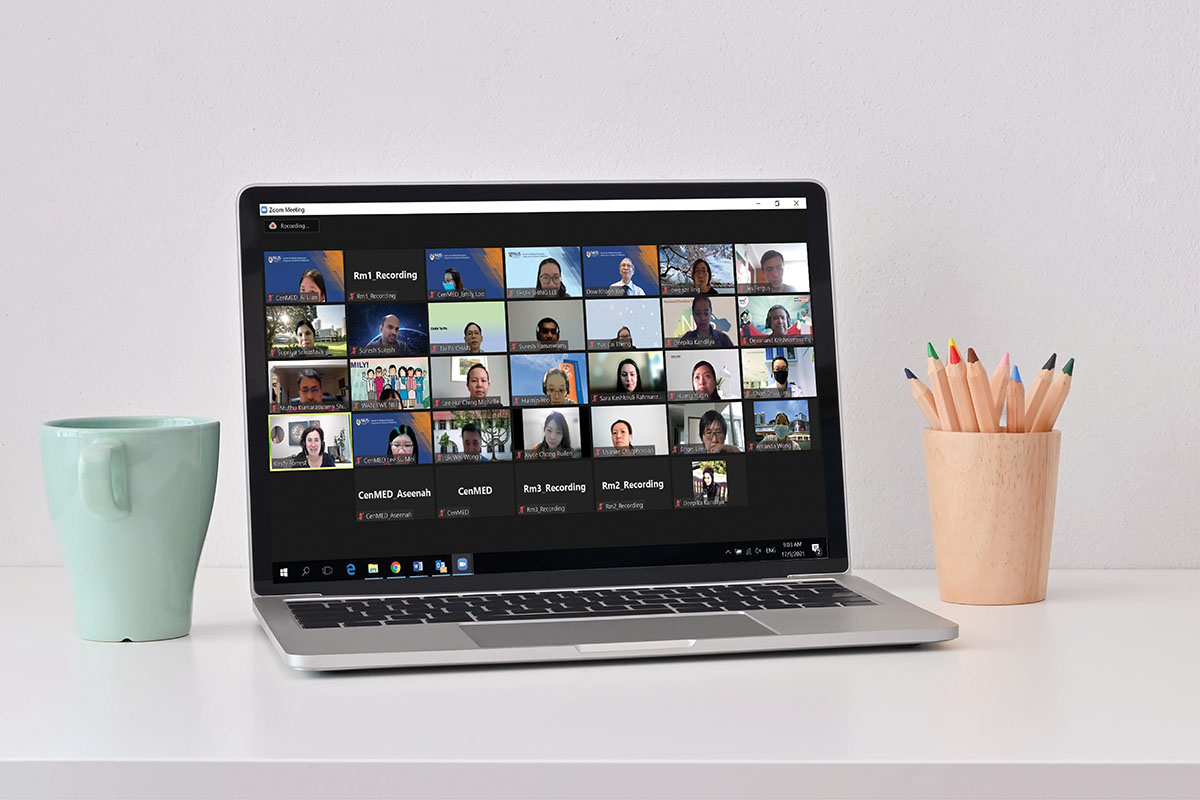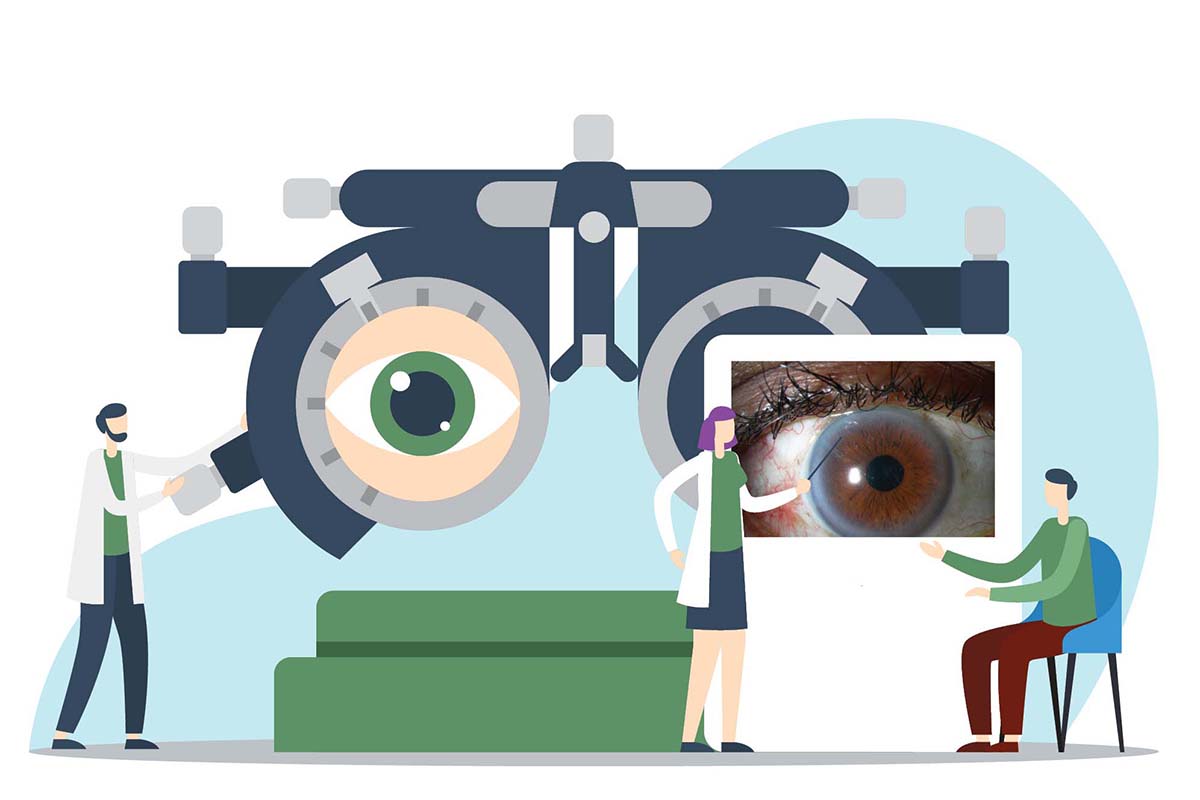
Issue 41 / February 2022
The Banyan Tree
What Adult Learners Want

This new column is dedicated to the pursuit of continuous learning and development and takes its name from the banyan tree. It has roots that grow deep, anchoring it firmly in the soil. The tree spreads its shade wide and far and provides space for reflection and discussion. We invite you to come and take a seat under its shade.
“Change is the only constant in life.” This quote, attributed to the Greek philosopher Heraclitus from 500BC, still resounds today. According to Heather McGowan, a Future-of-work strategist, change is coming at us at the highest velocity in human history. To manage change in the new economy, the continuous reinvention of self is critical where the blocks of life—learn, work, retire have shifted 90 degrees.
he impact of change cuts across all industry sectors, especially in healthcare. In the new economy, the healthcare workforce has to continuously learn, adapt and reinvent across a much longer career arc in an ever-evolving healthcare landscape.
With change pressing more professionals to pursue lifelong learning through continuous education, training institutions have introduced new and more programmes for adult learners. However, what do adult learners want?

How adults learn – Pedagogy vs andragogy
The growing interest in lifelong learning has thrust many training institutions to understand better how adults learn and the best practices in teaching adults. At the heart of adult learning is understanding the differences between pedagogy and andragogy.
Pedagogy originates from the Greek word “paidagogos”, which translates as “the act of leading a child”. It refers to the science and practice of teaching that is rooted in dependency. In the pedagogical model, students rely on their teacher to make all the learning decisions, including content and delivery. This is apt for children since their capacity to direct their own learning remains immature.
However, in the case of adults, their life experiences gravitate them towards a self-directing learning approach. Instead of submissively learning in a pedagogical model, adult learners are actively involved in their learning process, from content selection to how they want to learn. Aware of these differences, educator and researcher Malcolm Knowles, a trailblazer in adult learning, introduced the term andragogy in 1968 as part of his model for teaching adults.
Understanding the differences between pedagogy and andragogy has allowed educators to develop instructional designs to meet the distinct learning needs of each group.
Child Learners
![]()
|
• |
Rely on others to decide what is important to learn |
|
• |
Accept the information being presented at face value |
|
• |
Expect what they are learning to be useful in their long-term future |
|
• |
Have little or no experience upon which to draw—are relatively “clean slates” |
|
• |
Little ability to serve as a knowledgeable resource to the teacher or fellow classmates |
Adult Learners
![]()
|
• |
Decide for themselves what is important to learn |
|
• |
Need to validate the information based on their beliefs and experience |
|
• |
Expect what they are learning to be immediately useful |
|
• |
Have much experience upon which to draw—may have fixed viewpoints |
|
• |
Significant ability to serve as a knowledgeable resource to the trainer and fellow learners |
Adult learning needs – The six principles of andragogy
Knowles described andragogy as the art and science of adult learning. His research in andragogy has shaped the way training institutions design courses for adult learners. The differences he defined between andragogy and pedagogy are now referred to as the Six Principles of Andragogy. These principles lay the foundation for any adult trainer to address the expectations and wants of adult learners from their need to know to their motivation for learning.
The Six Principles of Andragogy
Need to know
Adults need to know why they need to learn something
Experience
Adults want to build on their experience in learning activities
Self-Concept
Adults want a role in deciding what to learn in their education
Readiness
Adults want to learn things they can apply immediately
Orientation
Adults want a problem-centred education rather than content-oriented
Motivation
Adults respond better to internal rather than external motivators
Transformative Learning experience for adults
Jack Mezirow, an American sociologist, developed the concept of Transformative Learning that addressed the needs of adult learners further by focusing on shaping the way adult learners think about themselves and the world. In Transformative Learning, trainers guide adult learners on a journey to bring their experiences to the classroom and challenge them through critical reflection and rational discourse.
Centrality of experience
All adult learners look at new information through the lens of what they have experienced before. Allowing adults to bring these experiences into the classroom discussion is important, but educators must also challenge adult learners when necessary on their preconceived beliefs.
Critical reflection
Adult learners understand well how past actions have an impact on the present. Critical reflection allows them to question current assumptions and accept new possibilities.
Rational discourse
Educators must ensure an open conversation about course topics, including the viewpoints of students who may base what they believe on authentic experience. In rational discourse, the insight from critical reflection is put into action.
Having the best-trained healthcare workforce will benefit the public health community through quality patient care. Enhancing and tailoring healthcare training programmes to meet the needs of adult learners lay the foundation for expedited and effective skill acquisition.

Career Arc: New economy shifts life blocks
-
Knowles, M. S. (1998). The adult learner (5th ed.). Houston, TX: Gulf Publishing.
-
Mezirow, Jack. (2003). Transformative Learning as Discourse. Journal of Transformative Education. 1. 58-63. 10.1177/1541344603252172.
-
Koons, Donald Christopher, “Applying Adult Learning Theory to Improve Medical Education” (2004). UCHC Graduate School Masters Theses 2003 – 2010. 51.
-
https://www.linkedin.com/pulse/preparing-students-lose-jobs-heather-mcgowan/.
-
https://online.pointpark.edu/education/pedagogy-vs-andragogy/.




